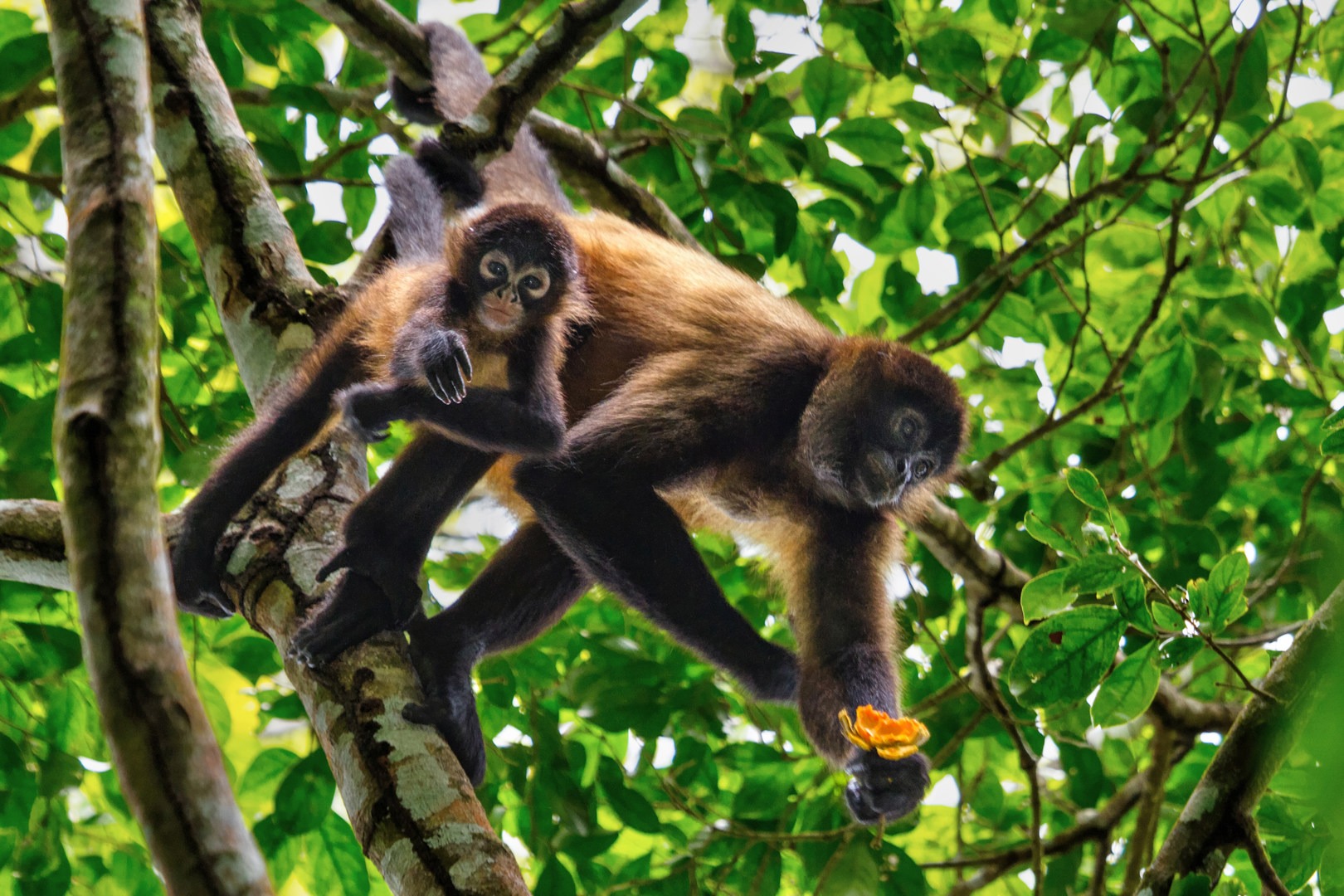You are here
Barro Colorado, which means "red mud," is an island in the middle of Gatun lake in the Panama Canal. It offers opportunities to hike in pristine tropical rainforests and observe many different species of birds, insects, mammals and flora. It is difficult to get access, so making arrangements months in advance of the visit is generally necessary, but the wait is well worth it.
Although it is currently an island, Barro Colorado used to be a mountain before the Panama Canal was built. As part of the construction, the Chagres River was dammed, creating Gatun Lake in 1914 and raising the water level over 26 meters, which was enough to turn the mountain into an island. This isolated the forest in the island from the mainland, though it is close enough that many animals can still swim or fly across. Interestingly, it is the forest birds that are most isolated, as some species do not ever leave the forest.
The island is part of the Barro Colorado Nature Monument, and it hosts the Smithsonian Tropical Research Institute. This means that there are resident scientists studying various aspects of the flora and fauna or the area year round. Some have called the island the most studied patch of tropical rainforest in the world.
There are over 25 miles of trails in the island, which are not open to the general public other than through guided visits that must be scheduled in advance. Aside from being mandatory, having a guide with deep knowledge of local species is invaluable. It is recommended to schedule the trip months in advance, as there is limited availability.
The area around the Smithsonian Tropical Research Center is the most visited. This is a secondary forest; it is not as old as the primary forest in the northern part of the island. There are a few trails, and it is not necessary to go very far to see a number of species. A 2-mile loop offers a good sample of the island and has a net elevation gain of approximately 400 feet. It can be hot and humid throughout the year, though it is particularly humid in the Northern Hemisphere's summer months (note that locals often refer to that period as "winter," referring to the rainy season). It can be muddy and slippery at times, thus it is important to wear adequate shoes. Some scientists and guides wear rubber boots not only to keep their feet dry, but also to keep ticks away.
There are many species of birds that inhabit the island, including toucans, trogons, and many others. The red-capped manakin is famous for their courtship dance, which resembles the "moon walk." In winter and spring, there are many migratory birds that pass through. That, combined with less precipitation, makes that time probably the best to visit. There are several species of mammals in the island as well, including bats, monkeys, ant eaters, and agoutis. Cats such as ocelots and pumas and larger mammals like tapirs are also present in the island, but they are much harder to see. Dart frogs, lizards, American crocodiles, many species of ants, spiders and butterflies can also be spotted. There are almost 500 species of trees in the island, including large quipo trees and vines that can be as large as tree trunks.
Guided tours cost $100 for adult visitors, which includes a 30- to 45-minute boat ride from the small town of Gamboa as well as lunch in the research institute’s cafeteria. This is a great location to both hike and observe the incredible biodiversity of tropical rainforests. Additionally, navigating the Panama Canal among large vessels is an experience in itself. While you are in the area, it is worth visiting the Miraflores Locks to observe ships being raised (or lowered) through the locks. The site includes a museum about the fascinating and complex history of the canal's construction.
Logistics + Planning
Current Weather: Powered by Dark Sky






























Comments
Sign In and share them.